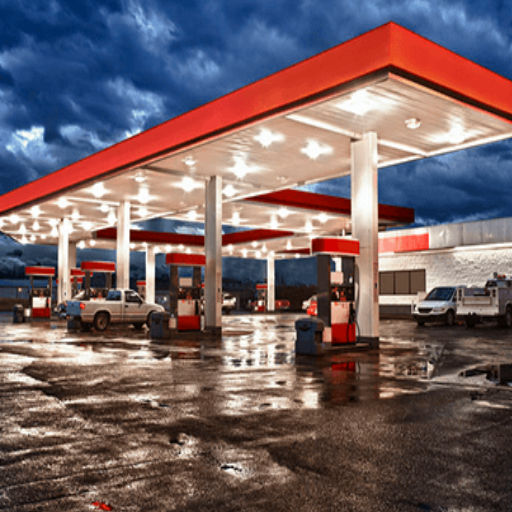Just how much fuel conforming to these gigantic underground tanks can be stored at a gas station? Gas stations are a lifeline to modern-day transport and serve fuel to billions of vehicles every day. But then, behind the scenes, there is an interesting setup to store and handle vast quantities of gasoline and diesel. This article takes you around the dyeing and capacity of gas station tanks, the factors governing the demand for storage, and the mode used by them to feed hungry commuters on the go and cross-country travelers. Prepare for some fun as you discover the hidden world beneath your neighborhood gas station, and delve into the intricacies that keep us all moving.
Overview of Gas Station Tanks
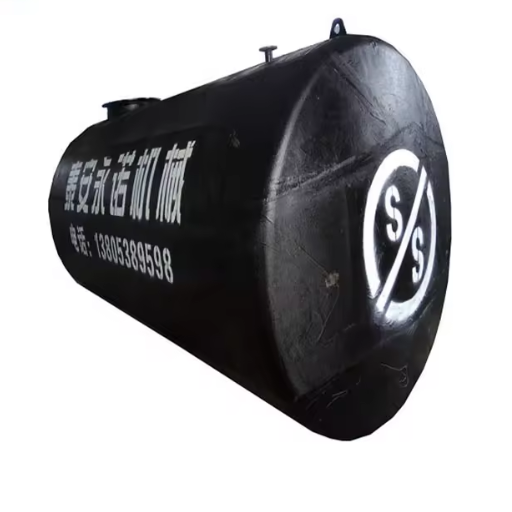
The underground storage systems designed to hold a large amount of fuel (usually gasoline or diesel) to meet consumer demand are known as gas station tanks. Modern gas stations often feature double-walled tanks made of corrosion-resistant materials, such as steel or fiberglass, to ensure safety and prevent leaks. The size of these tanks depends on the location or demand of the station, with sizes ranging from 10,000 to 30,000 gallons per tank. They also often have more than one tank. These tanks are regularly monitored through various systems to ensure proper fuel levels and environmental safety.
Types of Tanks Used in Gas Stations
Gas tanks at gas stations typically range from 10,000 gallons to 30,000 gallons, including sizes like 10,000, 12,000, 15,000, 20,000, and 30,000 gallons.
|
Size |
Material |
Usage |
Design |
Common Types |
|---|---|---|---|---|
|
10,000 |
Steel/Fib. |
Small volume |
Single/Dual |
USTs |
|
12,000 |
Steel/Fib. |
Medium volume |
Single/Dual |
USTs |
|
15,000 |
Steel/Fib. |
Larger demand |
Compartment |
USTs/ASTs |
|
20,000 |
Steel/Fib. |
High demand |
Compartment |
ASTs |
|
30,000 |
Steel/Fib. |
Bulk storage |
Compartment |
ASTs |
Importance of Tank Size in Fuel Storage
The size of the fuel storage tank is crucial for the efficient and safe operation of gas stations. Bigger tanks, measuring up to 30,000 gallons, enable stations to handle the high demand of consumers without frequent refueling deliveries, ensuring minimal disruption to operations and thus guaranteeing a reliable service throughout. On the contrary, small tanks can be used in low-traffic areas or for specific fuel types, allowing the station to utilize space efficiently and avoid excess inventory.
Tank size also affects cost-efficiency. Buying fuel in bulk for larger tanks typically results in a discounted price, leading to better profits for station owners. However, these larger tanks also require far more stringent monitoring systems to detect any leaky incidents and maintain environmental standards, as they contain a larger volume of potentially hazardous substances.
Finally, tank size is being governed by regulatory and zoning provisions. For instance, in some jurisdictions, capacity may be limited, or large tanks may be subject to additional safety requirements. This highlights the importance of selecting tank sizes that strike a balance between operational considerations, regulatory requirements, and economic factors.
Regulations Surrounding Gas Station Tanks
In all, gas station tanks are subject to numerous regulations aimed at ensuring environmental safety, operational efficiency, and public health. These regulations tend to be regional and are imposed by regional governing bodies; in the United States, the Environmental Protection Agency (EPA) is one such example. A primary concern included in such regulations is the prevention of spills and the detection of leaks. Regarding modern underground storage tanks (USTs), they are required to provide a secondary containment system and a double-walled design. This secondary wall or containment is designed to prevent leaks from contaminating the soil around and water sources.
A crucial consideration in the administrative framework established for medium-sized storage tanks is regular inspection. In many jurisdictions, such as the United States, UST systems must undergo tightness tests and corrosion assessments to certify the installation and structural integrity of the tanks within a specified timeline. Some offenders are reported to pay thousands of dollars per day, per violation, highlighting the importance of upholding these regulations from both environmental and financial standpoints.
Extreme care must also be taken to ensure ventilation and pressure standards are met. These tanks feature venting systems that safely release excess pressure while preventing the release of volatile organic compounds (VOCs) into the atmosphere, thereby protecting air quality. Generally, some regions impose restrictions on tank emissions by requiring vapor recovery systems that collect and recycle gasoline vapors during the refueling process.
Furthermore, the latest technological innovation in the enforcement technology market is automated tank monitoring. It ensures the detection of irregularities in real time. Such a system is highly proactive and should decrease the likelihood of an incident threatening the environment, while also improving operational performance. Following such enactments will not only keep gas stations safe but also promote sustainable environmental practices.
Understanding Underground Storage Tanks (UST)
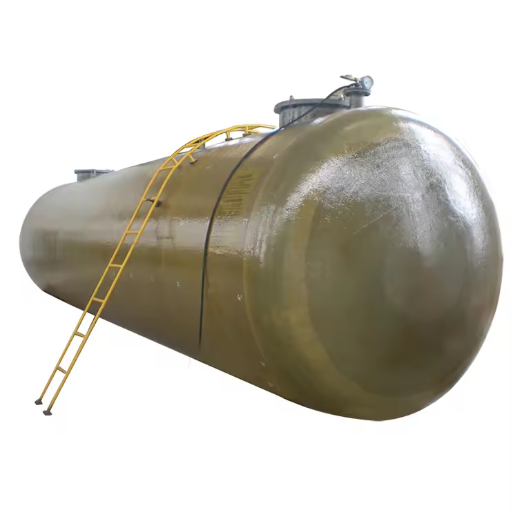
An Underground Storage Tank (UST) is used for storing liquid substances, such as petroleum, hazardous chemicals, or other chemicals, underground. The fundamental purpose is to contain these materials with minimum environmental risk safely. Increased emphasis is placed on the proper maintenance and monitoring of USTs to ensure that they do not leak and contaminate soils and groundwater. Hence, these regulations prescribe requirements for appropriate safeguards on the UST system, such as leak detection, the use of moisture-resistant materials, and regular maintenance, and ensure that these safeguards are adequate in mitigating the dangers associated with these tanks.
What is an Underground Storage Tank?
An Underground Storage Tank is a huge container engineered to hold various liquids or gaseous substances underground. Typically, these tanks are filled with petroleum products, hazardous chemicals, or other materials that require regulation. USTs are the most extensive storage facilities in the world, providing facilities for storing massive volumes of material while saving space above.
An EPA report defines a UST system as any tank, including the underground piping connected to it, having at least 10% of its combined volume underground. There are an estimated 550,000 active UST systems in the United States alone for fuel storage. However, leaks, spills, and improper handling of USTs may pose serious environmental hazards affecting numerous soil and water resources.
New-age USTs have technologies installed within to ensure safety; such mechanisms include the double tank walls, automatic leak detection, and applied layers that serve as corrosion inhibitors. Operators must ensure that their tanks are regularly monitored and maintained to comply with regulations designed to address public health concerns. They are practically required to conduct regular integrity tests on the tank and document every single inspection, record, and repair done on the tank. Solutions to these tests enable operators to prevent contamination occurrences and ensure the long-term security of these storage systems.
Standard Sizes of USTs at Service Stations
Underground storage tanks (USTs) at service stations vary in size, often depending on fuel demand at any particular location. Standard sizes range from 6,000 gallons to 20,000 gallons, and variations such as having multiple tanks—one for each fuel type, including gasoline, diesel, and ethanol blends—are employed in many stations. On the smaller side of the scale, USTs between 6,000 and 10,000 gallons are frequently used. Bigger sites or those with heavier traffic generally opt for 15,000-gallon size tanks, which essentially means tanks larger than 15,000 gallons, to maintain an uninterrupted fuel supply.
Under today’s standards, sullage tanks are primarily designed with a double-walled structure to ensure greater safety from environmental contamination. However, they vary in size depending on the required volume capacity. For purposes of visualization, a tank with a 10,000-gallon capacity would be approximately 30 feet long and 8 feet in diameter. In comparison, a tank with a 20,000-gallon capacity might be approximately 40 feet or more in length. The tanks are fitted nicely to achieve a well-balanced space versus operational competence, combining environmental safeguards with customer fuel requirements.
Benefits and Challenges of USTs
Underground storage tanks (USTs) constitute vital components in fuel storage and supply chains, offering several advantages. One of its main advantages is that it saves space. By burying the tanks, the surface area can be utilized for other activities or infrastructure. Today, USTs contain modern leak detection systems coupled with corrosion-resistant materials, which reduces the contamination risk. Another advantage is that they maintain a more stable temperature for the stored materials, thereby minimizing potential issues such as fuel evaporation or degradation.
The disadvantages of USTs primarily relate to the installation and maintenance aspects. In other words, initial installation costs are heavy, owing to the excavation, adherence to zoning requirements, and preparation of an adequate site. Regular inspection and maintenance are legally required, adding to the long-term costs of USTs.
However, environmental risks are a concern with USTs, as a hidden leak could lead to a significant issue regarding groundwater pollution. According to ecological agencies, remedial actions were necessitated in more than 544,000 confirmed releases from USTs in the United States during the last reporting period. This only highlighted the importance of even stricter monitoring norms for these systems.
Although the difficulties remain, some technological developments have been underway to mitigate the threats. For better safety and regulatory compliance, for instance, standard secondary containment and automated tank gauging (ATG) systems are in place. Thus, with continuing developments in UST technology and stricter environmental policies, the scales will be balanced between the advantages and challenges of these much-needed means of storage.
Fuel Storage and Tank Size Considerations
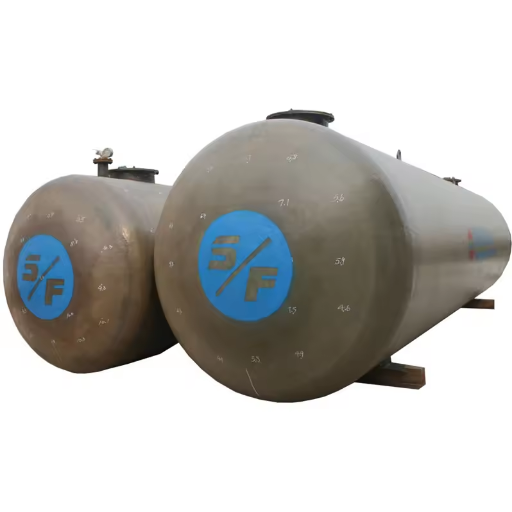
When selecting fuel storage tanks, the tank size must be chosen according to the type of usage or fuel demand. Large-capacity tanks are efficient for facilities that consume a significant amount of fuel, thereby reducing the frequency of tank refills and enabling continuous operations. Smaller tanks are more suitable for areas with space limitations or those requiring lower fuel consumption. By observing local regulations and safety requirements, such as spill prevention and proper ventilation on the tanks, the best storage solutions can be balanced with safety concerns and regulations.
Factors Affecting Tank Size at Gas Stations
Several key criteria determine the suitability of tank size for a gas station, ensuring smooth operation, cost-effectiveness, and ultimately, customer satisfaction.
Fuel Demand and Traffic Volume: The size of storage tanks depends mainly on the expected fuel demand and traffic volume of a station. For large, higher-volume sites, such as those located near highways or in urban centers, larger tanks are required to meet the continuous demand. A busy station selling more than 100,000 gallons would need large-capacity tanks to minimize delivery occurrences and prevent running out of fuel. Small tanks will suffice for small sales outlets in rural areas or those with minimal traffic.
Frequency of Fuel Delivery: The accessibility and cost of fuel delivery services are another key factor influencing tank-sizing decisions. Bigger tanks may be beneficial for gas stations located in remote areas where fuel delivery services are scarce. For instance, a station wanting to reduce delivery cycle frequencies would therefore require tanks of 20,000 gallons or more to store supplies in lesser quantities ahead of time.
Types of Fuel Offered: A typical scenario for modern gas stations is catering to diverse needs: gasoline, diesel, and ethanol blends. All types usually require separate storage. Generally, multiple storage tanks are used to balance demand with space considerations; tanks are commonly in the 10,000- to 20,000-gallon range per tank.
Local Safety and Environmental Regulations: Complying with stringent safety and environmental standards is crucial when determining the optimal tank size. Regulations may specify the use of double-walled tanks, spill containment facilities, and some form of protection against environmental contamination. Consequently, to effectively address safety concerns while maximizing storage space, these conditions can impose constraints on both the size and design of tanks.
Available Space and Infrastructure: The physical layout of the station and the amount of land available are also important considerations in selecting the tank size. Stations in densely populated areas or urban areas with limited space may need small, compact tanks or modular tank systems. At the same time, stations located in less crowded areas with ample land would be able to install larger-capacity underground tanks.
Operational Costs and Budget: Upsizing installation and maintenance do bring in larger tanks. However, this should be weighed against larger tanks, which further reduce operational costs in the long run by minimizing the number of fuel deliveries needed and by utilizing bulk discounts on most occasions. Smaller tanks are less expensive to install, but they require enormous logistical costs due to the high frequency of refueling. The financial considerations that form this balance help determine the most profitable size of storage tank.
By thoroughly evaluating these factors, gas stations may end up with storage systems that adequately meet customer demands, comply with regulatory standards, and perform suitably within their respective operational environments.
Modern Fuel Storage Solutions
Modern fuel storage facilities have developed with efficiency, safety, and sustainability in mind. One of the key innovations has been the development of double-walled storage tanks, which feature an inner tank used to contain the fuel and an outer wall serving as a secondary containment barrier. This design helps minimize losses through leakage and complies with stringent environmental laws. The use of these tanks has been reported to reduce the risk of accidental spills by up to 50% compared to older, single-walled tanks.
At another level, automation has made significant strides in fuel storage monitoring. The installation of sophisticated sensors enables operators to track fuel level, temperature, and contamination in real time. The system issues warnings in the early stages of faults to minimize downtime and reduce maintenance costs. For example, one ultrasonic level sensors measure with accuracy up to 98%, hence, managing stock and ensuring an uninterrupted supply.
Additionally, the trend is shifting towards renewable and ecological practices, one of which is the integration of biodiesel-compatible storage tanks specifically designed for handling alternative fuels, thereby contributing to the global reduction of carbon emissions. However, it is a fact that biodiesel can reduce greenhouse gas emissions by up to 76% compared to regular diesel. This only reinforced the urgency for such technological innovations.
Modern solutions, in turn, also encourage modularity for scale. Modular tanks can be easily adjusted to meet the varying demands of gas stations in both urban and rural settings, thereby creating flexible and cost-efficient arrangements. With these advancements, fuel storage technology is now meeting the ever-changing needs of consumers while supporting sustainability and compliance with all regulatory requirements.
Impact of Tank Size on Fuel Availability
For ensuring smooth service delivery in areas with fluctuating demand, a larger fuel tank size is essential to guarantee at least consistent fuel availability. Larger tanks can store greater quantities of fuel. Thus, they reduce the frequency of trips to refuel and give a more reliable supply at times of peak usage or unforeseen disruptions. According to studies, for instance, gas stations with storage capacities of up to 15,000 gallons can better tolerate demand surges, especially in urban areas with heavy traffic.
In contrast, smaller tanks are ideal for rural or lower-demand locations, where fuel may be delivered or supplied without heavy logistics costs. However, if the tanks are undersized, stockouts will occur during supply chain disruptions or peak demand periods, such as the holiday season. Recent industry insights indicate that storage optimization concerns extend beyond tank sizing to include the integration of monitoring technologies that provide real-time data on fuel levels and demand patterns. With the help of these tools, stations become capable of balancing inventories much more efficiently, thereby averting shortages and improving customer satisfaction.
Gas Station Storage and Environmental Concerns
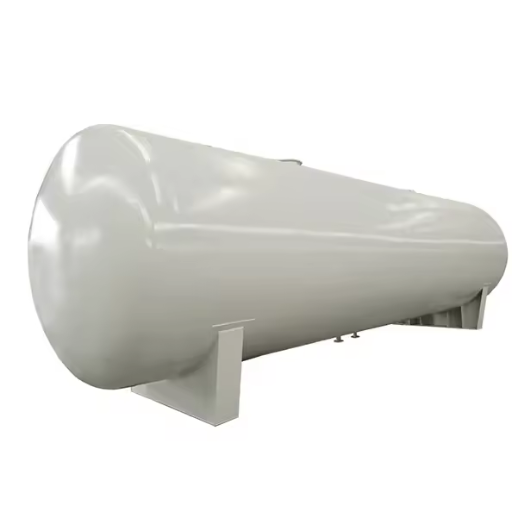
Environmental concerns arise from gas station storage, primarily due to the risk of fuel leaks and vapor emissions. Ideally, underground storage tanks (USTs) must be maintained to prevent any contamination in the soil and groundwater resulting from leakage. Regulations, such as those enforced by the EPA, exist to provide tanks with a measure of safety through the use of corrosion-resistant materials, leak detection systems, and regular inspections. From another perspective, vapor recovery systems recover emissions during fuel dispensing that would have otherwise polluted the air. By following these practices and guidelines, gas stations can ensure safer operational storage with a reduced environmental impact.
Environmental Regulations for Gas Station Tanks
Modern environmental regulations for gas station tanks aim to prevent potential environmental contamination and, in a way, promote sustainable practices. One such crucial regulatory area is the underground storage tanks (USTs) that store petroleum and other hazardous substances. The latest data indicate approximately 550,000 active USTs spread across the United States, all of which are required to comply with strict federal and state laws.
They require double-walled tanks and piping systems to prevent contaminants from soil or groundwater from leaking in. These regulations require an advanced monitoring technology system, such as automatic tank gauging (ATG), which provides real-time data as to fuel levels, temperatures, and whether there is a leak. Once disposed of, regular inspections should be conducted on all facilities, typically every one to three years, to determine whether they have been complying with the above regulations and to identify any system weaknesses.
In addition to air quality regulations, which play a role in ensuring that Stage I and Stage II vapor recovery systems are installed, these systems limit the emission of volatile organic compounds (VOCs) during fuel storage and dispensing, thereby reducing pollutant emissions and promoting better air quality. They also prepare facility pollution prevention, control, and countermeasure (SPCC) plans that outline potential emergencies and how to tackle them efficiently.
Non-compliance with a regulation can become a very costly mistake very quickly, as it can result in hefty fines or corrective penalties, with some penalties exceeding $25,000 per day for non-compliance. Such complied-with laws and new-age technology provide assurances to gas stations that are beneficial for the environment, safety, and reliability.
Monitoring and Maintenance of Storage Tanks
Storage tanks must be regularly monitored and maintained to prevent leakage and corrosion, ensuring compliance with environmental legislation. By utilizing state-of-the-art technological provisions, these tanks can be monitored in real-time through automatic tank gauging systems for accurate measurement of fuel levels, temperatures, and potential leaks. In this way, operators are alerted to abnormal conditions that may cause environmental contamination and costly damage, with ample time to react.
Periodic inspections are an essential aspect of tank maintenance. According to accepted industry standards, underground storage tanks (USTs) should be inspected at intervals, typically every three to five years, as required by local regulatory authorities. These inspections test the tank’s structural integrity, vapor recovery systems, and sample the soil around the tank area for any indication of breaches.
More than half of all leaks in USTs are due to corrosion. Corrosion protection systems, such as cathodic protection, can be employed to mitigate these effects. In cathodic protection systems, electrical currents are passed through the system to prevent the steel of the tank from oxidizing. Double-walled tanks and secondary containment represent another alternative in pollution prevention; they prevent leaks from reaching the environment.
Any preventive maintenance schedule should be strictly adhered to to keep the tank systems operational and in compliance. Predictive maintenance methods, leveraging artificial intelligence and machine learning, help operators forecast potential system failures by analyzing historical data. Storage tanks thus achieve the benefits of regular monitoring, combined with modern technologies, to optimize performance while preserving environmental quality.
Future Trends in Gas Station Tank Design
Therefore, technology, sustainability objectives, and modern engineering approaches will shape the future of gas station tank design. The trend leans towards tanks that are double-walled and made of composite materials, hence better durability and corrosion resistance. By leveraging materials and construction techniques, tanks have a minimal chance of leaking, a core environmental concern that is highly regulated by law.
Intelligent monitoring is another feature being introduced into modern tank design. This system incorporates IoT sensors transmitting real-time data about the tanks’ levels, temperature, pressure, and structural integrity. By doing so, it improves operational efficiency while ensuring that potential issues, such as leaks or system failures, are addressed promptly.
Sustainability is also a prime motivator behind innovation for tank design. Many manufacturers are exploring bio-based and recycled materials to reduce the carbon footprint of storage tanks. Another focus is on renewable energies, with solar-powered monitoring being one solution, perhaps the most well-known, for reducing energy usage from the monitoring system and lessening the environmental impact of tank systems.
Reports indicate that the global market for advanced fuel tank systems is expected to grow significantly in the next few years, driven by the rising demand for fuel storage systems that comply with environmental regulations and incorporate safety features. Innovations are expected to emerge from continuous research and development, ensuring that gas-station tank designs evolve in line with modern needs.
Modern Fuel Storage Practices
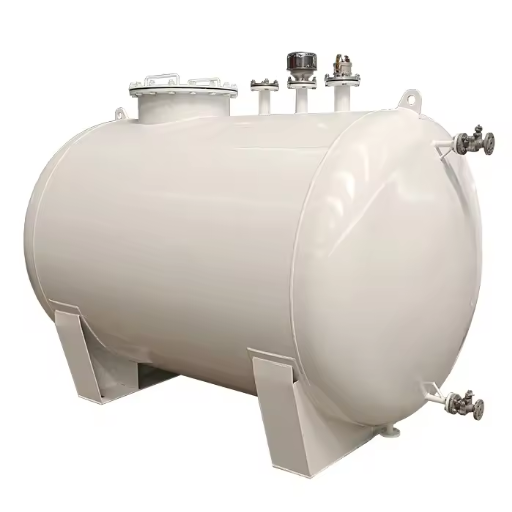
Liquid fuel storage is highly focused on safety, efficiency, and environmental protection. Advanced tank systems should enable the retention of liquid without leakage while adhering to strict environmental regulations. Double-walled storage tanks are preferably used to provide an extra layer of protection against leakage. Furthermore, automated systems are installed to monitor signs of trouble, thereby preventing contamination from taking place. Additionally, these best practices include periodic inspections, maintenance, and the adoption of general safety procedures that prevent the storage system from collapsing, thereby ensuring its sustainability. These concerted efforts demonstrate how storing fuel is both safe and environmentally friendly.
Advancements in Fuel Storage Technology
Recent innovations in fuel storage technologies have led to improvements in efficiency, safety, and environmental sustainability. One major innovation has led to the use of advanced materials, with carbon fiber and composite materials being two examples. They now allow for better durability while reducing the weight of storage tanks. Such lightweight materials are crucial in the automotive and aerospace industries, where efficiency is paramount.
Another major shift is the implementation of IoT-enabled intelligent monitoring systems. Such systems, in real-time, can measure and provide data about pressure, temperature, or potential leakage, thereby aiding in predictive maintenance and accident prevention. Research is also being conducted on creating storage systems made of renewable and biocompatible materials for alternative fuels, such as hydrogen and biofuels, to meet market demand for cleaner energy.
The solutions presented are modular and flexible, scalable, and hence easily deployable across industries. Together with sealing improvements and higher welding standards, these ensure better safety and sustainability of industrial and commercial applications. This, then, represents a significant advancement toward achieving energy and environmental goals.
Environmental Considerations for Tank Size
The size selection of the tanks depends on the environmental aspects. Larger tanks may emit less carbon during frequent refilling or transportation. However, an enlarged tank may demand material wastage and high land disruption during installation. To this end, suitable tank sizing reduces environmental degradation and truly balances the environment against the requirement on one side and efficiency against resource use on the other. Moreover, further sustainability is promoted by employing environmentally friendly materials and designs, with an emphasis on recycling and reducing energy consumption during manufacturing. At the same time, regulatory standards and site conditions must be considered simultaneously to prevent contamination and ensure compliance with environmental laws.
Regulations Governing Gas Station Tanks
According to my understanding, gas station regulations regarding storage tanks primarily relate to environmental safety and public health considerations. Hence, they usually cover areas such as tank design, installation, and maintenance so that any leaks or contaminations are avoided. For instance, tanks must be equipped with secondary containment, regularly inspected, and constructed in accordance with national standards, such as those promulgated by the Environmental Protection Agency (EPA). Finally, of course, having proper record-keeping systems and adhering to local and federal laws ensures compliance.
Reference Sources
The Effect of Facilities and Service Quality on Customer Satisfaction of Gas Station
Frequently Asked Questions (FAQs)
What is the typical size of gas station storage tanks?
Gas station storage tanks, often referred to as underground storage tanks (USTs), typically range in size from 10,000 to 30,000 gallons of fuel. The specific volume of fuel stored can vary based on the gas station’s location and the demand for petrol or diesel fuel. In some cases, larger petrol stations may have multiple tanks to accommodate different types of fuel.
How are underground storage tanks maintained?
Maintenance of underground storage tanks involves regular inspections and monitoring of fuel levels, as well as checking for leaks or corrosion. Ensuring the tank’s integrity is crucial for compliance with local regulations. Maintenance costs can vary, but are essential for the long-term lifespan of the tank.
What materials are used for gas station tanks?
Gasoline tanks and diesel fuel tanks are commonly made from materials such as steel or fiberglass. Steel tanks are often resistant to corrosion when properly coated, while fiberglass tanks provide an alternative that is less prone to rust. Both types of tanks require proper installation and maintenance to ensure compatibility with the fuel stored.
How do gas stations prevent overfill of tanks?
To prevent overfill, gas stations are equipped with overfill protection systems that include valves and shut-off mechanisms. These systems are designed to stop the flow of fuel when the tank reaches capacity, thereby minimizing the risk of spills and hazardous materials being released into the environment.
What is the importance of spill containment systems at gas stations?
Spill containment systems are crucial for gas stations as they help manage hazardous materials in the event of a spill. These systems are designed to contain any leaks or spills, protecting both the environment and public health. Regular monitoring and maintenance of these systems are essential to ensure they function correctly.
How does the size of aboveground tanks compare to underground tanks?
Aboveground tanks generally have a smaller capacity compared to underground storage tanks. Aboveground tanks are often used for smaller fuel storage needs and are easier to inspect and maintain. However, underground tanks are typically larger and can store more fuel, which is essential for high-demand gas stations.
What factors influence the lifespan of gas station tanks?
The lifespan of gas station tanks is influenced by several factors, including the material of the tank, the type of fuel stored, and the presence of monitoring and management systems. Regular maintenance and adherence to local regulations can significantly extend the lifespan of both underground and aboveground tanks.
What is the role of monitoring systems in fuel storage?
Monitoring systems play a crucial role in fuel storage by providing real-time data on fuel volume, detecting leaks, and ensuring compliance with safety regulations. These systems help gas stations manage their fuel inventory efficiently and can alert operators to any issues that may arise, thus preventing potential hazards.






